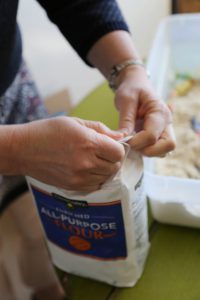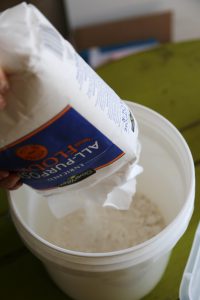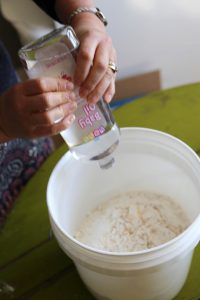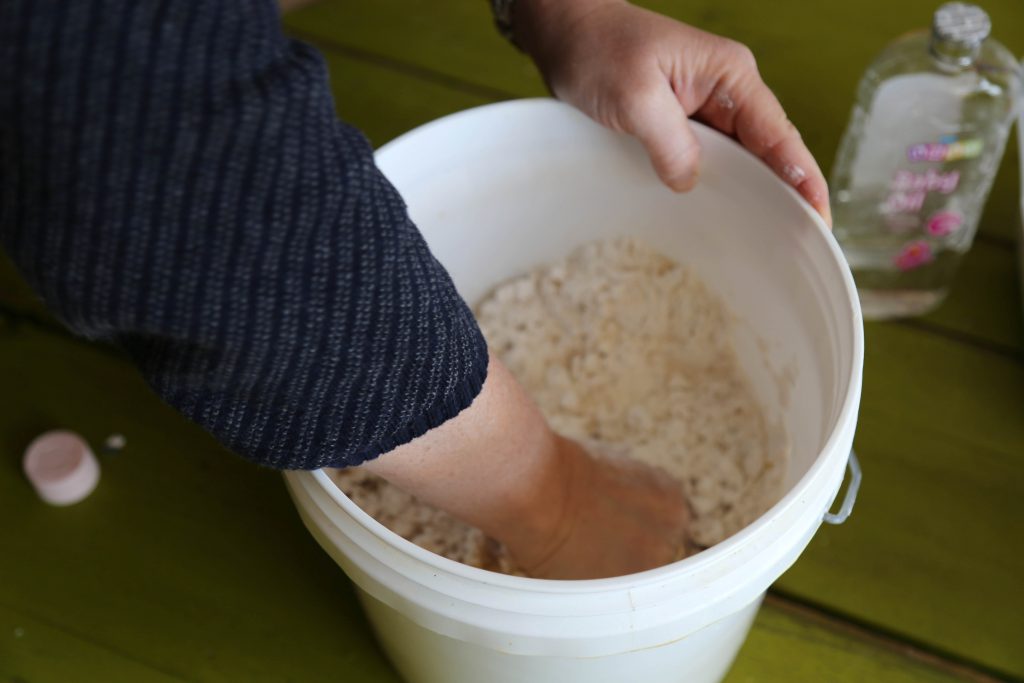If you’re looking for an easy activity with tons of sensory benefits, look no further. Soft sand (also known as cloud dough or moon sand) is the exact thing you’ve been looking for. It’s easy to make, silky, and smells great! We’re not kidding when we say this can keep your kids entertained for hours.
All you need are two common household items to make soft sand: one 5-pound bag of flour and 20-22 ounces of baby oil. You’ll also want a container with a lid to eventually store it in.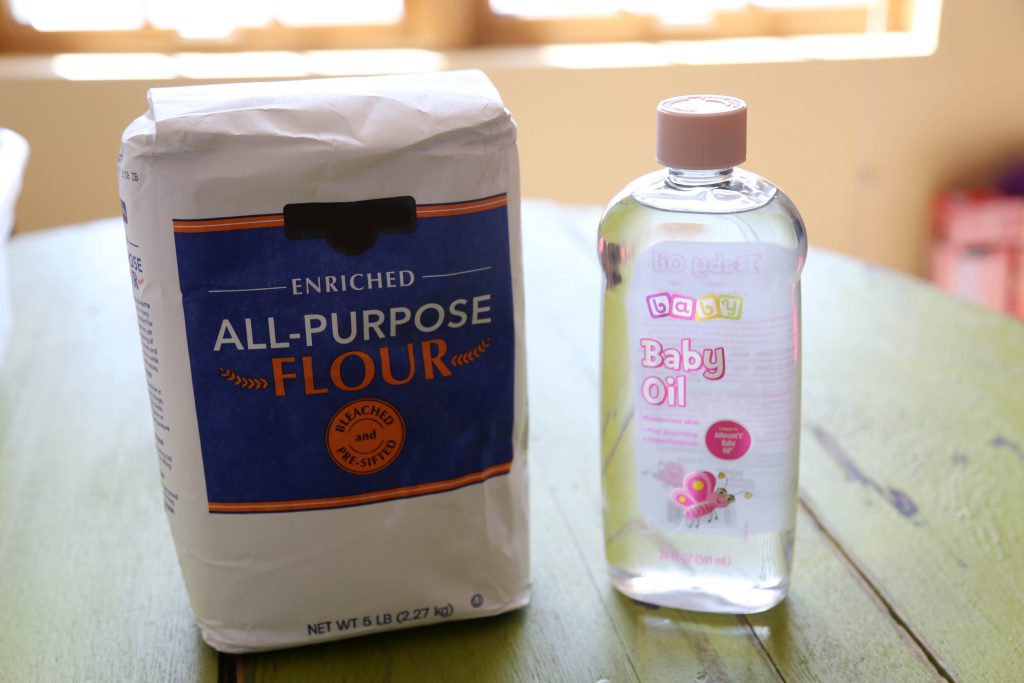
First, pour the flour and baby oil into a bucket or container.
Next, mix the baby oil into the flour. You can use a pastry cutter or spoon to mix it, but some of the fun and benefit (think tactile input and strengthening) is in the hand mixing, so allow your child to help with this process, even if it might be a little messy.
Finally, pour the soft sand into a box and add some toys. Foam beads are a great item, but all sorts of items, like cups, string, toy cars, bouncy balls, and more, are fun to play with in soft sand.
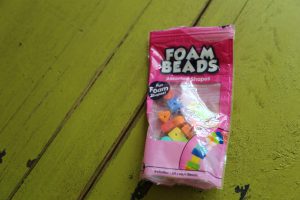
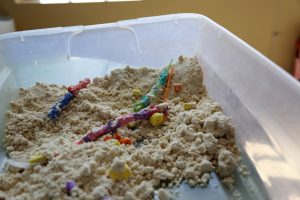
Your child will have hours of fun either looking for small items that you hide in the soft sand or just scooping and packing the sand into smaller containers or cups. When your kiddo is done playing, simply put a lid on the container; soft sand will store infinitely in a sealed container!
So now, if you’re wondering what the sensory and motor benefits are for this activity, let me explain the three primary benefits.
- Tactile processing: Since this texture is slightly wet but not as slimy as some, it’s perfect for kids who are more apprehensive. This can be a very calming activity due to the softness of the texture, as well as the nice smell from the baby oil.
- Tactile discrimination: By adding small beads, you can work on tactile discrimination through activities like having your child find the beads without looking.
- Fine motor coordination: When your child places the beads on a string or a small straw (a straw is a good downgrade if the string is too difficult), they’re also developing fine motor coordination.
Want to learn more about how sensory preference might be impacting your child and how occupational therapy at Kinetic Edge can help? Then check out this article by Occupational Therapist Elise Spronk.
Occupational therapy and pediatric services are available in our Pella and Oskaloosa clinics.



